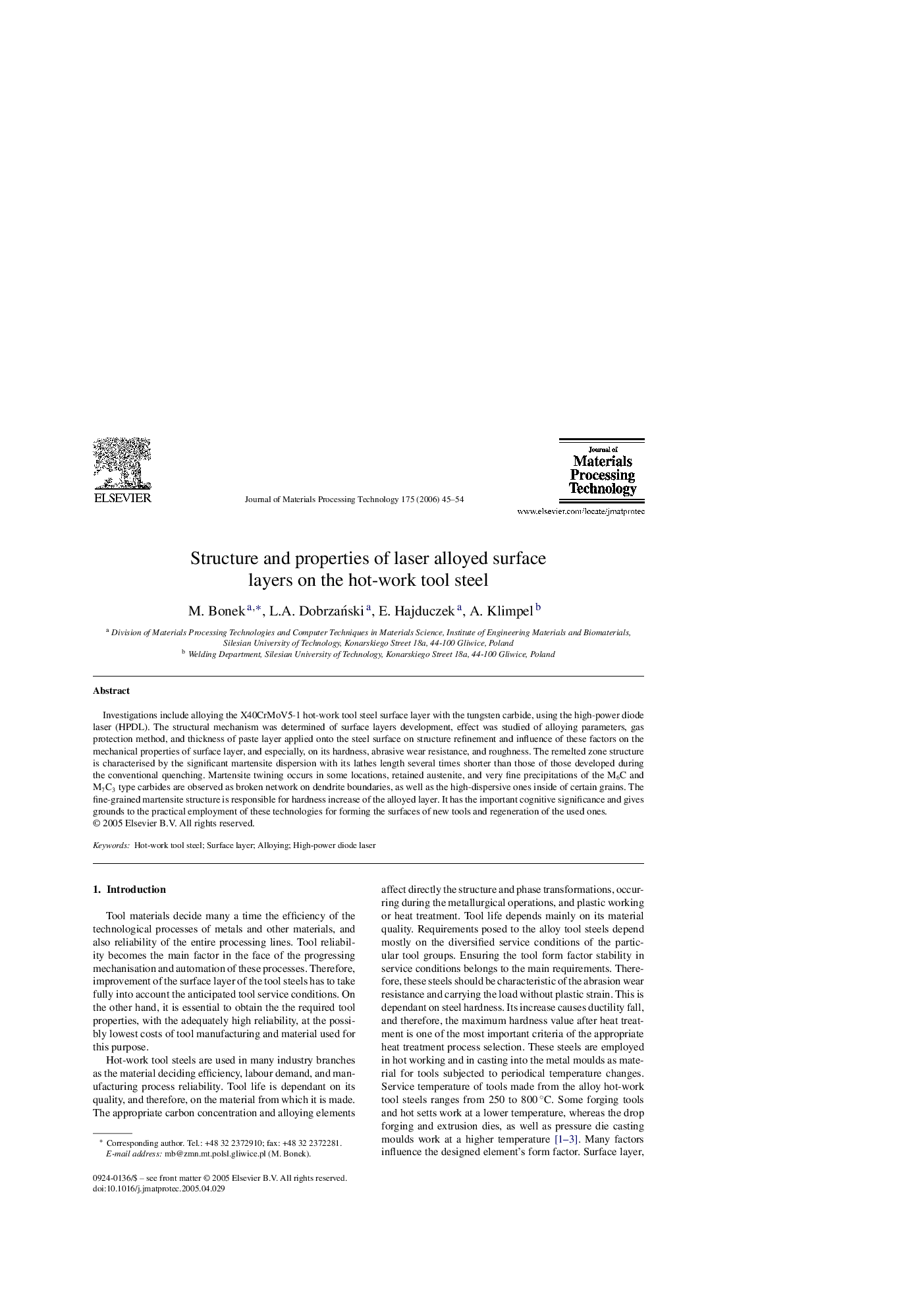| Article ID | Journal | Published Year | Pages | File Type |
|---|---|---|---|---|
| 798885 | Journal of Materials Processing Technology | 2006 | 10 Pages |
Investigations include alloying the X40CrMoV5-1 hot-work tool steel surface layer with the tungsten carbide, using the high-power diode laser (HPDL). The structural mechanism was determined of surface layers development, effect was studied of alloying parameters, gas protection method, and thickness of paste layer applied onto the steel surface on structure refinement and influence of these factors on the mechanical properties of surface layer, and especially, on its hardness, abrasive wear resistance, and roughness. The remelted zone structure is characterised by the significant martensite dispersion with its lathes length several times shorter than those of those developed during the conventional quenching. Martensite twining occurs in some locations, retained austenite, and very fine precipitations of the M6C and M7C3 type carbides are observed as broken network on dendrite boundaries, as well as the high-dispersive ones inside of certain grains. The fine-grained martensite structure is responsible for hardness increase of the alloyed layer. It has the important cognitive significance and gives grounds to the practical employment of these technologies for forming the surfaces of new tools and regeneration of the used ones.
